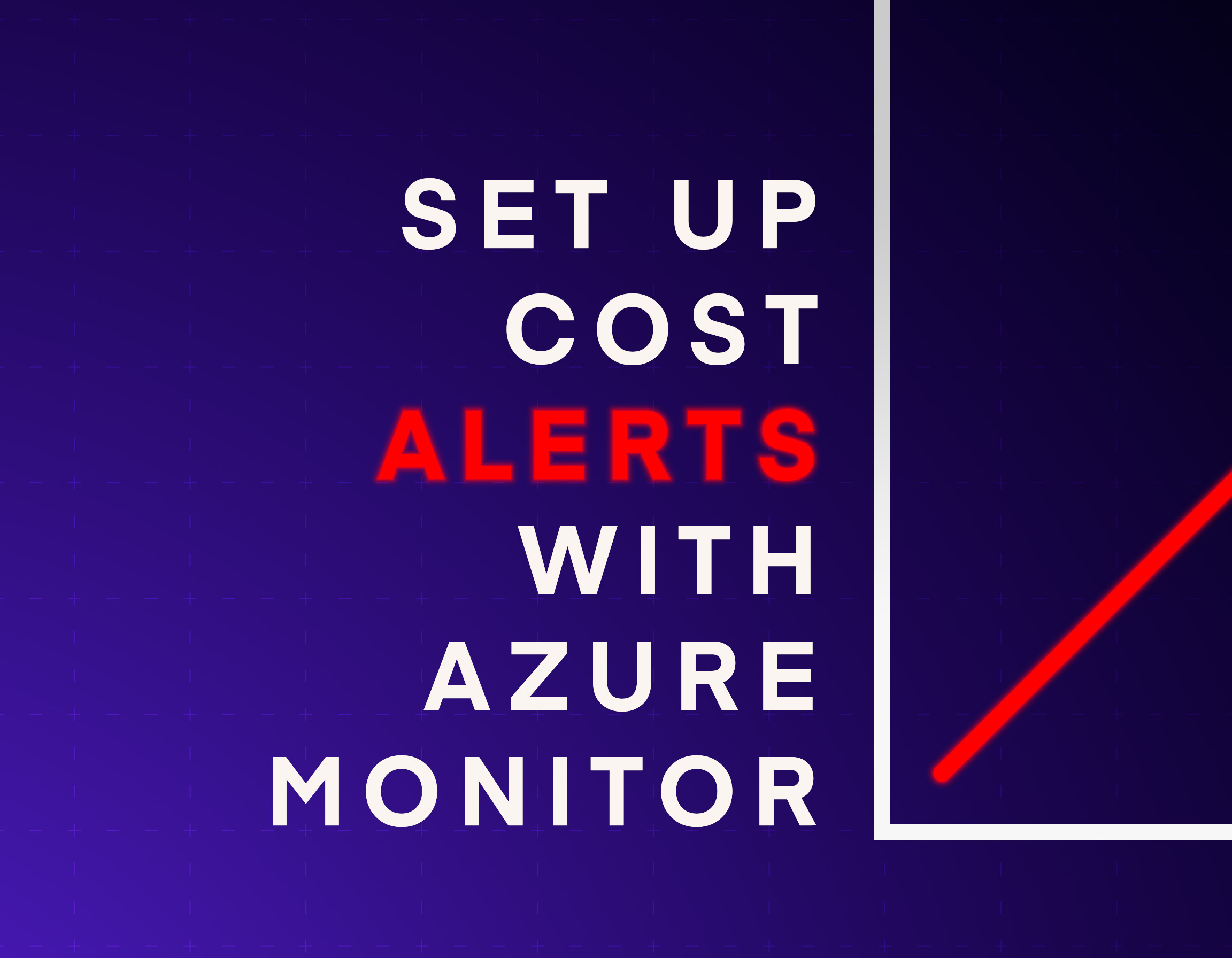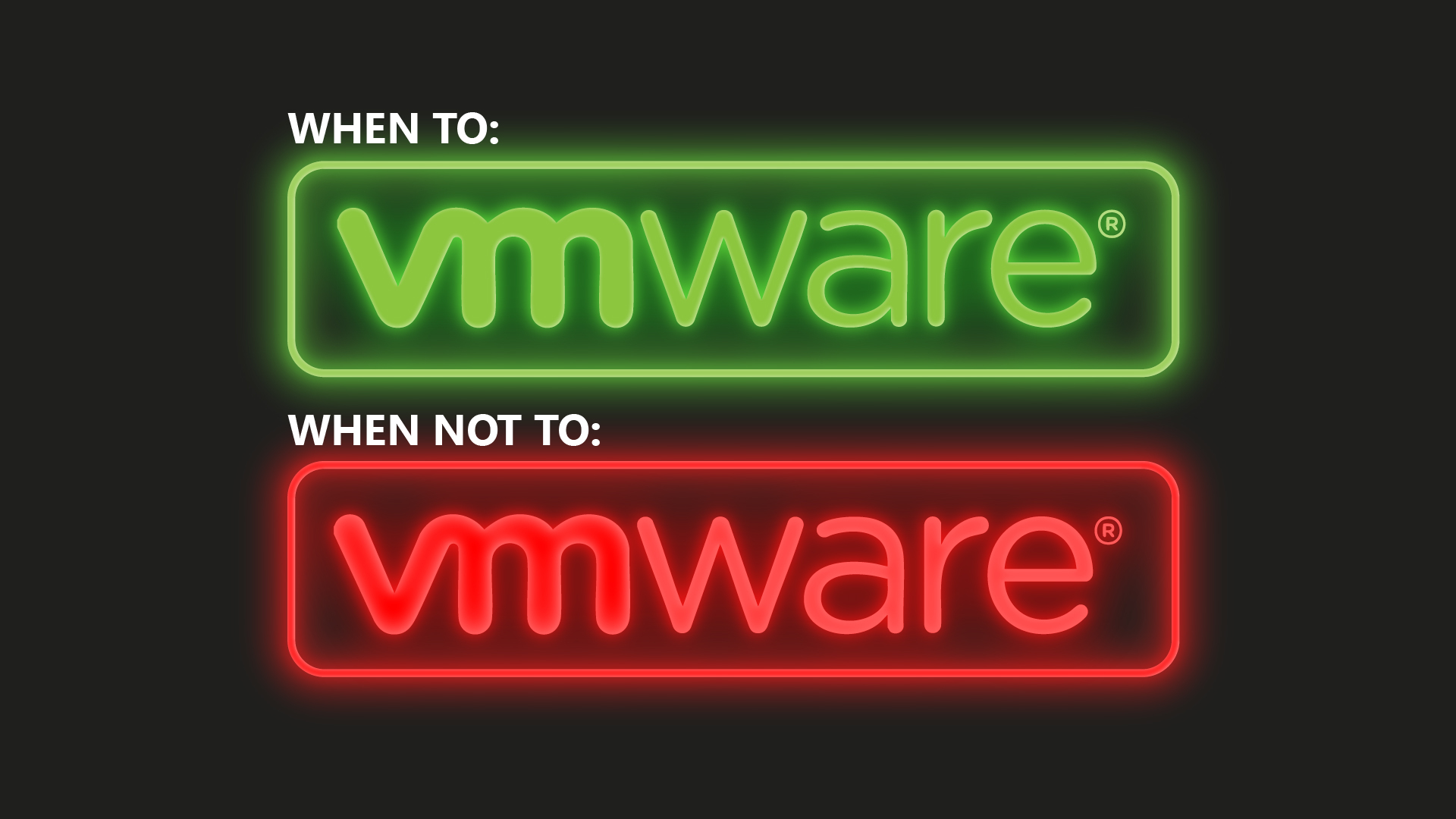The Azure Monitor alerts that can save you money
Not all Monitor alerts are relevant when it comes to managing your cloud costs. So you’ll want to direct your attention to these—the most useful types of Azure Monitor alerts to keep your Azure bill in check:
Budget alerts
These are the most straightforward cost controls you can set up. Budget alerts notify you when your spending reaches or exceeds predetermined thresholds of your defined budget. You can set these at different percentages (50%, 70%, 90%, etc.) to give yourself plenty of warning before you hit your limit.
Cost anomaly alerts
Sometimes unusual spending is something to look out for: identifying those unexpected patterns. Cost anomaly alerts use machine learning to detect unusual spending patterns based on your historical usage. These are great for spotting those “hang on, that’s not right” moments before they turn into “oh dear” situations.
Resource utilisation alerts
Low utilisation often means wasted money. These alerts monitor CPU, memory, disk, or network usage and let you know when resources are consistently underutilised. Perfect for identifying those VMs you’re paying for but barely using.
Scheduled query alerts for cost data
For more sophisticated cost monitoring, you can create custom Log Analytics queries that run on a schedule to check for specific cost conditions. These are particularly useful for complex environments where standard alerts might not catch everything.
You can use Azure Resource Graph or the Cost Management APIs to query cost data. Then, create scheduled query rules in Azure Monitor Logs to trigger alerts based on the results of those queries.
Near real-time spending alerts
When you need to know about excessive spending immediately, these alerts operate on minimal delay. They’re particularly useful for resources with variable consumption-based pricing, like Azure Data Factory or Logic Apps, where costs can ramp up quickly.
You would typically implement this using a combination of Azure Monitor, Azure Functions, and potentially the Cost Management APIs. You would need to set up a system to query usage data frequently (as close to real-time as possible) and trigger alerts when spending exceeds certain thresholds within a short period.
Getting started: Setting up your first cost-focused alerts
Setting up alerts might seem quite technical, but it’s actually quite straightforward.
Head to Azure Monitor within the Azure Portal. Under “Monitoring”, you’ll find “Alerts”, and it’ll allow you to create a new rule.
Here’s what you’ll need to do when getting your first cost alerts up and running:
Prerequisite configurations
Before diving in, you’ll need:
- The appropriate permissions (usually Contributor or Owner roles)
- Azure Monitor configured for the resources you want to track
- If using Log Analytics, a workspace set up to store and query your data
Getting these basics sorted first will save you headaches later. Think of them as laying the foundation before building your cost control HQ.
Establishing baseline metrics
You can’t spot abnormal spending without knowing what normal looks like. Spend some time reviewing your current costs and usage patterns to establish baselines for:
- Typical daily/weekly/monthly spending
- Resource utilisation during peak and off-peak times
- Seasonal variations in your workloads
These baselines become your financial North Star—the reference point that helps you identify when things are starting to drift off course.
Creating actionable alert rules
When you’re setting up alerts, make them specific and actionable:
- Choose the right signal type (metric, activity log, or log search)
- Define clear threshold conditions that warrant attention
- Set appropriate time windows (how long the condition must exist before alerting)
- Determine who should be notified and how
The more precise your alerts, the more useful they’ll be. Vague alerts lead to either ignored notifications or panic—neither of which helps your bottom line.
Testing and validating
Don’t wait for a real cost issue to see if your alerts work:
- Create temporary test resources that’ll trigger your alerts
- Simulate high usage scenarios
- Verify that notifications are delivered as expected
- Make adjustments to reduce false positives
A bit of testing now can save you from finding out your alerts aren’t working when you’re already over budget. It’s better to trigger a false alarm in testing than miss a real problem in production.
This validation process doesn’t need to be complicated. In fact, you can use Azure’s built-in tools to help you test effectively. If you combine Azure Budgets (part of the Cost Management service) with the Azure Monitor alert system, you can create test scenarios that verify your entire notification chain from detection to response.
Once you’ve mastered these basics, you might wonder what else is possible. Let’s look at some more sophisticated approaches that can take your cost optimisation efforts to the next level.
Advanced alert configurations for cost optimisation
Some of these advanced configurations get rather technical. But don’t let that put you off. We’re sharing these possibilities to show you what’s achievable when you really want to fine-tune your cost controls.
Multi-dimensional alerting strategies
Imagine alerts that consider multiple factors simultaneously—like time of day, department usage, and resource type. These complex alert rules can help you spot nuanced spending patterns that simple alerts might miss. For instance, you might want different thresholds for development environments during working hours versus production environments running 24/7.
Dynamic thresholds for seasonal workloads
If your business has predictable busy periods (like retail during holidays or accounting at year-end), static thresholds won’t cut it. Dynamic thresholds adjust automatically based on historical patterns, giving you seasonal-aware alerts that reduce false alarms during expected usage spikes.
They typically need three weeks of historical data to identify patterns. There’s a useful guide to this on the Microsoft guide to dynamic thresholds.
Cascading alert systems
Think of these as alert escalations. Start with gentle nudges for minor issues, then progressively more urgent notifications as situations worsen. A small budget overage might warrant an email, while a severe cost spike could trigger a text message to the IT director.
Integration with auto-scaling
One of the ideal forms of cost optimisation is when your alerts don’t just notify—they take action. (More on this in the next section.) If you connect Azure Monitor alerts with auto-scaling rules, you can automatically scale down underutilised resources or temporarily deploy cost-effective alternatives when price thresholds are reached.
While you can do all these things with Azure Monitor, some of the more complex scenarios can take additional configuration and integration with other Azure services. This might potentially include third-party tools.
Not sure where to start with all this? Microsoft’s Learning Portal is always a good place to start—and at Synextra, we’re always ready to help. Contact us if you’d like some friendly advice.
Let your alerts do the heavy lifting with automation
The real power of Azure Monitor alerts isn’t just in detecting issues—it’s in what happens next. With the right setup, your alerts can kickstart automated responses that fix cost problems before they escalate.
Here are some of the ways you can make use of cost-reducing automatic actions in Azure Monitor.
Creating effective action groups
Action groups determine what happens when an alert fires. You can set up different groups for different scenarios, like:
- Cost threshold breaches
- Resource efficiency warnings
- Budget forecasting alerts
Each group can trigger multiple actions, from sending notifications to initiating remediation workflows. One thing to focus on is matching the response to the severity of the cost issue.
Automated responses to cost triggers
Why manually shut down unused VMs when your alerts can do it for you? Azure Monitor can trigger automation including:
- Automatically resizing over-provisioned resources
- Scheduling shutdowns of non-production environments outside business hours
- Moving infrequently accessed data to cheaper storage tiers
Logic Apps and Function integrations
For more sophisticated responses, integrate your alerts with Logic Apps or Azure Functions. These can perform complex decision-making before taking actions, such as:
- Checking if a spike in costs is expected before raising an alarm
- Gathering additional data to provide context with notifications
- Implementing approval workflows for cost-saving measures
Human intervention workflows
Some decisions still need a bit of human judgment. In these cases, alerts can trigger approval requests or incident tickets that:
- Present cost-saving options to budget owners
- Escalate to the right decision-makers
- Provide all the context needed to make informed choices quickly
Remember, the goal isn’t to create an impenetrable wall of automation—it’s to handle the routine stuff automatically while raising flags for the decisions that need human input.
Real-world examples: What alerts could do for you
To help spark some ideas, here are some potential scenarios that show the potential of Azure Monitor alerts for cost savings. These types of optimisations are well within reach with the right alert configuration.
Preventing off-hours resource waste
Imagine a marketing agency running expensive analytics VMs 24/7, despite only needing them during business hours. They could set up alerts that trigger automatic shutdowns at 7 PM and restarts at 7 AM on weekdays.
With complete weekend shutdowns, they could see up to 65% reduction in compute costs without any impact on productivity.
Controlling sprawling test resources
Picture a software development company where developers frequently forget to delete test environments after use.
By implementing alerts that flag inactive dev resources after 72 hours and send notifications to team leads, they could potentially recover a big chunk of their Azure budget that’s being wasted on abandoned resources.
Managing unpredictable workload costs
Now consider an e-commerce business experiencing unpredictable traffic spikes that sometimes lead to excessive costs.
A multi-tiered alert system could monitor both performance and costs, automatically scaling resources up during legitimate traffic increases but notifying management when costs exceed certain thresholds. This balanced approach would optimise spending while maintaining site performance during peak periods.
Best practices for alert management
Alert fatigue is real. If your phone is constantly pinging with notifications, you’ll soon start ignoring them all—including the important ones.
If you take note of these best practices, you’ll build an alert system that highlights genuine issues without overwhelming your team with unnecessary notifications. The goal is to make your alerts helpful assistants rather than annoying distractions.
Here’s how to maintain an effective alert system:
Alert fatigue prevention
The key to preventing alert fatigue is quality over quantity. Start with a small number of high-value alerts and expand gradually as you validate their usefulness. Use different notification channels for different severity levels—perhaps email for routine issues and text messages for critical ones.
It’s also worth implementing “snooze” periods for known activities like planned deployments. This prevents a flood of expected alerts that everyone will just ignore anyway. Regularly reviewing and adjusting thresholds helps reduce false positives that can quickly lead to ‘alert blindness’.
Documentation and knowledge sharing
A well-documented alert system is worth its weight in gold. Take the time to explain what each alert means and what actions should be taken in response. This becomes especially valuable when new team members join who might not understand the context, or when you need cross-functional teams to collaborate on cost management issues.
Good documentation creates consistency in how you respond to recurring issues. Rather than having everyone develop their own approach, a documented process ensures the most effective response every time.
Review and refinement cycles
Your cloud environment is constantly evolving and your alert system should evolve with it. Schedule monthly reviews to assess which alerts are providing value and which ones are just generating noise. Look for emerging cost patterns that might warrant new monitoring rules.
These regular check-ins prevent your alert system from becoming stale or irrelevant. What worked perfectly six months ago might need adjusting as your usage patterns change.
Alert governance frameworks
For larger organisations, consider implementing a more formal governance structure around your alerts. This doesn’t need to be bureaucratic—just clear about who owns different alert categories, how effectiveness is measured, and what the escalation paths are when issues arise.
The best governance frameworks integrate your alert strategy with your broader cloud management approach. This ensures that cost control isn’t happening in isolation but is part of your overall cloud governance strategy.
Measuring the impact: How much are you actually saving?
Setting up alerts is one thing—proving their value is another. Here’s how to demonstrate the ROI of your monitoring efforts:
Key performance indicators for cost alerting
When measuring the effectiveness of your alert system, you want to focus on metrics that are directly connected to financial impact.
Cost avoidance—spending that would have occurred without alerts—is your primary metric, but it’s not the only one worth tracking:
- Mean time to resolution for cost issues
- Alert-to-action ratio (how many alerts lead to cost-saving actions)
- False positive rate (alerts that didn’t indicate actual issues)
These metrics together paint a picture of not just how much you’re saving, but how efficiently your alert system is operating. The ideal setup catches real issues quickly while minimizing distractions from false alarms.
ROI calculation methods
Calculating the return on your monitoring investment means you have to look at both costs and benefits.
Start by tracking what you’re spending to implement and maintain your alert system, including both technology costs and staff time. On the benefits side, measure direct savings from automated actions triggered by alerts, such as automatically shutting down unused resources.
Don’t forget to factor in indirect savings from faster issue resolution, and compare your current spending against historical patterns from before you implemented alerts. A well-configured alert systems can pay for itself within months of operation.
Before and after comparisons
Nothing tells the story better than a clear before-and-after picture. Month-on-month spending comparisons provide the most obvious evidence, but also look deeper at resource utilisation improvements and the percentage reduction in wasted resources. Many organisations also notice smoother spending patterns with fewer unexpected cost spikes once their alert system is properly tuned.
These tangible results make it easy to justify the investment in proper cost monitoring, especially when you’re presenting it to finance teams or execs who want to see concrete returns.
Continuous improvement strategies
The true power of an alert system goes beyond immediate savings. Use the data from your alerts to drive ongoing optimisations, like:
- Identifying recurring cost issues that might need architectural solutions
- Spotting trends that suggest changing usage patterns
- Refining your budgeting process based on actual consumption patterns
- Building more accurate forecasting models
In many cases, the insights gained from monitoring prove just as valuable as the direct cost savings, improving your overall cloud governance and planning capabilities.
Ready to get started? We’re here to help
Setting up Azure Monitor alerts for cost optimisation doesn’t have to be overwhelming. While the possibilities are vast, you don’t need to tackle everything at once.
Start with the basics we’ve outlined in this guide, focus on your biggest cost concerns, and build from there. Remember that even small improvements can lead to significant savings over time.
And if you’d rather have experts handle the setup for you, that’s where Synextra comes in. As a boutique cloud MSP, we specialise in helping UK businesses get more value from their Azure investments without the impersonal approach of the corporate giants.
Our team can help you:
- Identify the most impactful alerts for your specific environment
- Set up the right notifications and automated responses
- Integrate your alerts with your broader cost management strategy
- Provide ongoing support and optimisation
Get in touch to learn how we can help you turn Azure Monitor alerts into your secret weapon for cloud cost control.





